Dr. Jan Janecka works at the Dept. of Biological Sciences in Duquesne. He also works with the Snow Leopard Conservancy, the Cat Specialist Group, the Snow Leopard Network and the USFWS Ocelot Translocation Team. Currently, Dr. Jan Janecka is focusing on conservation genetics of snow leopards, tiger genomics, cancer in tigers, the equine hindgut microflora, and the horse Y chromosome. He has conducted field expeditions, trained biologists, and taught genetics in numerous Asian Countries including Mongolia, China, Nepal, India, and Bhutan.
Could you summarize what you do in the field for research?
I focus on applying genetic tools to understand the distribution, abundance, and connectivity of snow leopard populations. This means spending a lot of time in the field collecting poop – a common goal of many wildlife biologists! Feces can tell you so many things about animals, especially elusive ones like snow leopards. I take the scats back to the lab, extract DNA and then use the same approaches forensic scientists apply to solve crimes to determine how many snow leopards are in the area. In addition, I use the DNA to compare between different areas to look at dispersal and movement. There is even DNA from the prey and I can determine what they are feeding on. My main goal is to get a handle on population trends and connectivity, so that we can better focus conservation efforts.
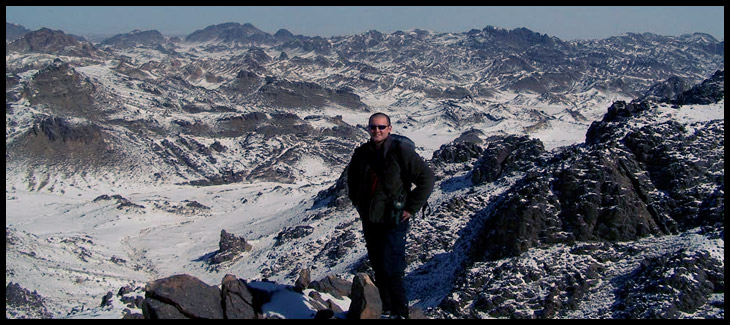
What does a typical field day look like?
I work very closely with the local families and biologists. This work cannot be done without their help and participation. My research team, composed of myself, couple Mongolian biologists, and a driver will stay in a gher with a herder family. In the morning we have tea and eat a small breakfast of mutton, may be some bread and cheese. Then we drive out to drainages and gullies, or to ridge-lines that run down to accessible areas. We go as far as we can in old Russian 4-wheel drive vans. Then we split into 2 teams and hike up onto the ridge-lines and saddles looking for snow leopard sign. Once we find a wildlife trail, we follow it for 2-5 km depending on the terrain, and collect all scats and record all scrapes. We take GPS locations and place the scats in collection tubes. We then hike back to the vehicle and go back to the family gher. The research team spends time with the family, we talk, have tea, play cards, and then have dinner. The scenery and people are inspiring, the openness and the rugged beauty of the landscape is remarkable. Some days are harder than others depending on the steepness of the terrain and the altitude.
What inspired you to start doing this?
I have always loved remote, wild places. The snow leopard is a symbol of true wilderness. I was intrigued by these remarkable animals and wanted to apply the knowledge I had in genetics to better understand and protect them.
Why do you think it’s important – how does it benefit the animals?
Knowledge and information is required to develop, implement, and evaluate conservation plans. Because snow leopards are so elusive, and they live in areas that few people focus on, we need to get a better handle on snow leopard populations and what factors are important for sustaining them. The countries where they occur are currently experiencing major cultural and economic changes and it is critical we the development of local communities proceeds in a way that also ensures healthy populations of snow leopards and the ecosystems they live in. Because conservation and management actions are both logistically and financially difficult, we need research to help us focus them.
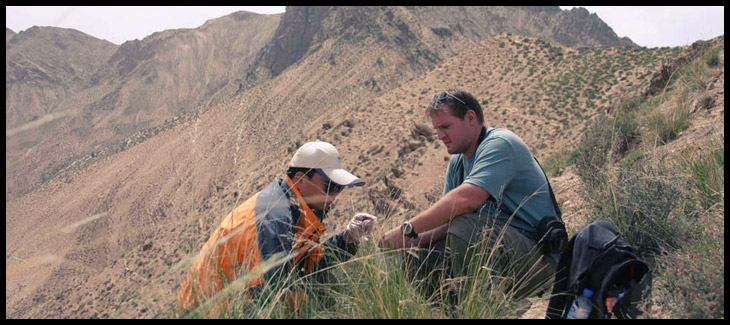
What is the hardest thing about snow leopard research?
The difficulty of getting to the land the snow leopards occupy.
What is the most rewarding thing about it?
The wilderness and the solitude. Walking along a ridge-line, following the footsteps of a snow leopard. The camaraderie of the field team. Living with the host families. Breathtaking views from the top of ridge-lines. Making discoveries about snow leopards.
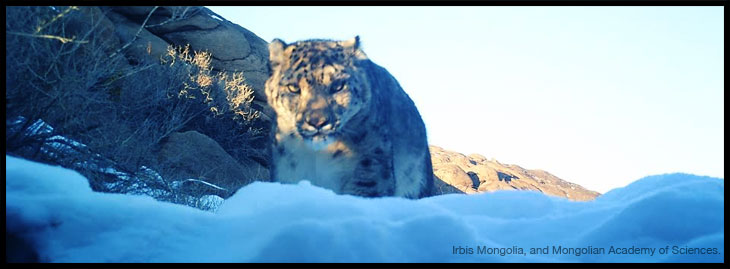
What if others want to help but don’t want to go into the field. How can they help?
I think the most important way they can help is to share and promote snow leopards and the ecosystems of Central Asia with their friends, families, colleagues, and communities. There has been a phenomenal amount of effort to conserve lions, cheetahs, elephants, and other species of Africa in large part because they are so visible – people can go on a Safari and see them. However, very few people that go to Central Asia will see a snow leopard. In addition, tourism is not as well developed in these places. Therefore, despite many dedicated people working to conserve snow leopards, conservation ends up being much more limited in that part of the world. However, by talking about snow leopard, reading about them, encouraging people, governments, NGOs, and others to focus on them, raising and donating funds for conservation and research – all these things generate momentum that will increase conservation efforts on snow leopards and other important species in Central Asia.
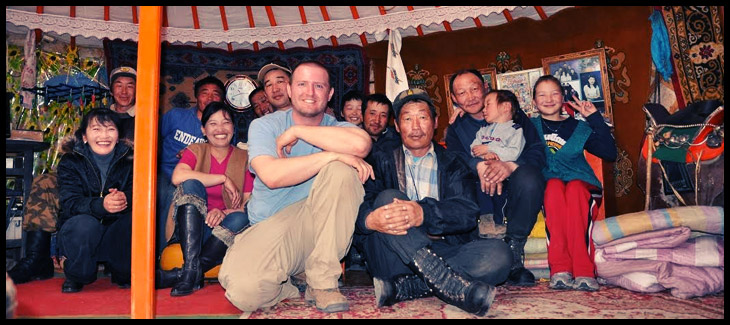
Finally, do you have any advice for a young student wanting to study something like snow leopards? What would you tell them?
If you are dedicated, and work hard, you will succeed in your goals. However, do not expect to immediately fall into the dream position – that may or may not happen depending on luck. You often need make your own opportunities and be persistent. Always be the best at what you are doing at the time and positively contribute to whatever that is, while at the same time continue to move in the direction of where you ultimately want to be.
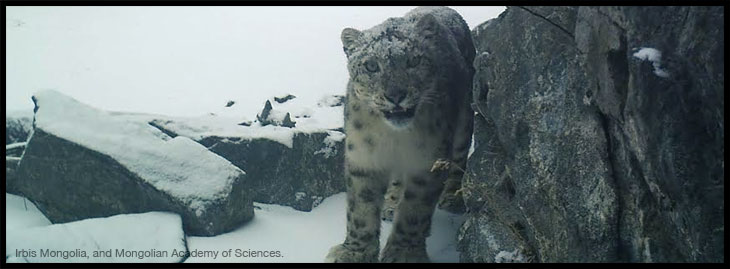
Learn more about Jan Janecka …
You can read more about Dr. Jan Janecka and his research at Duquesne University
































































































